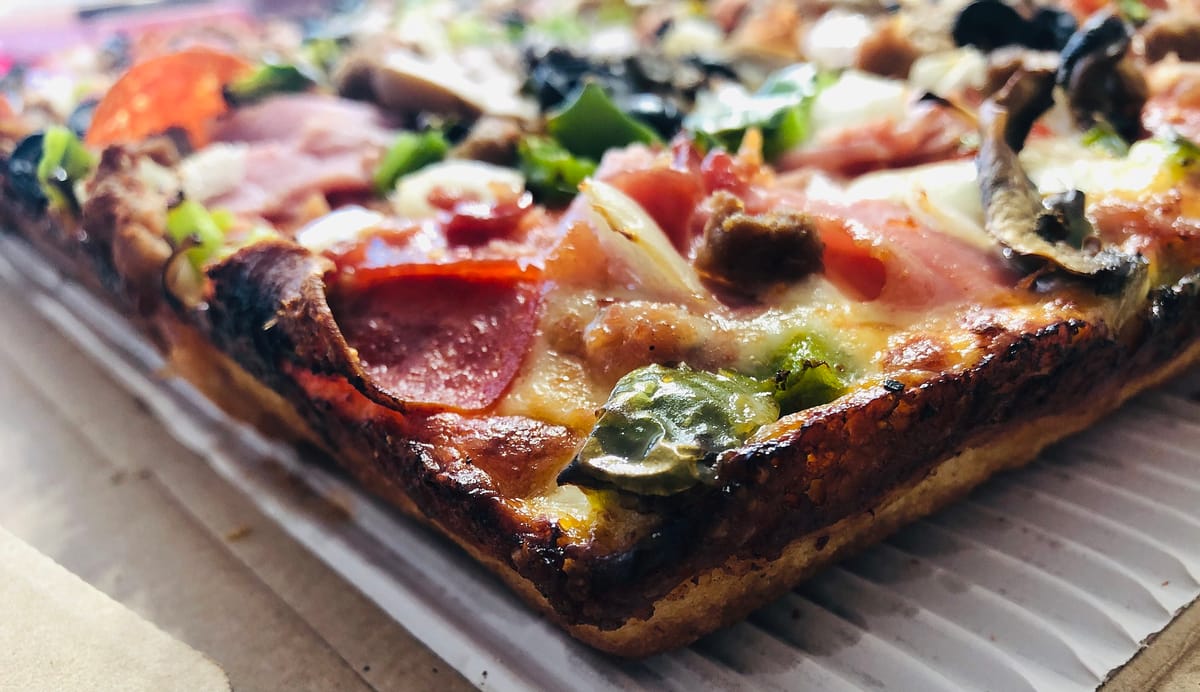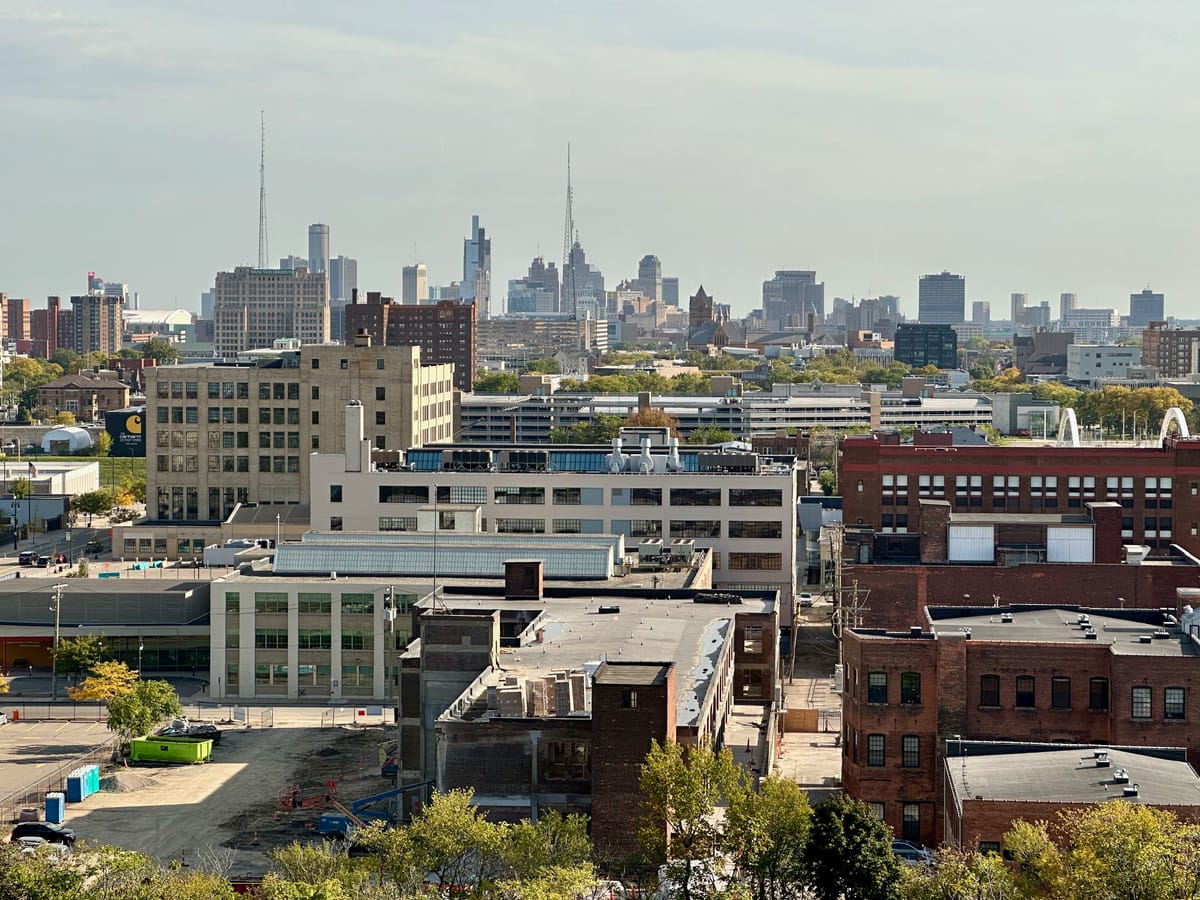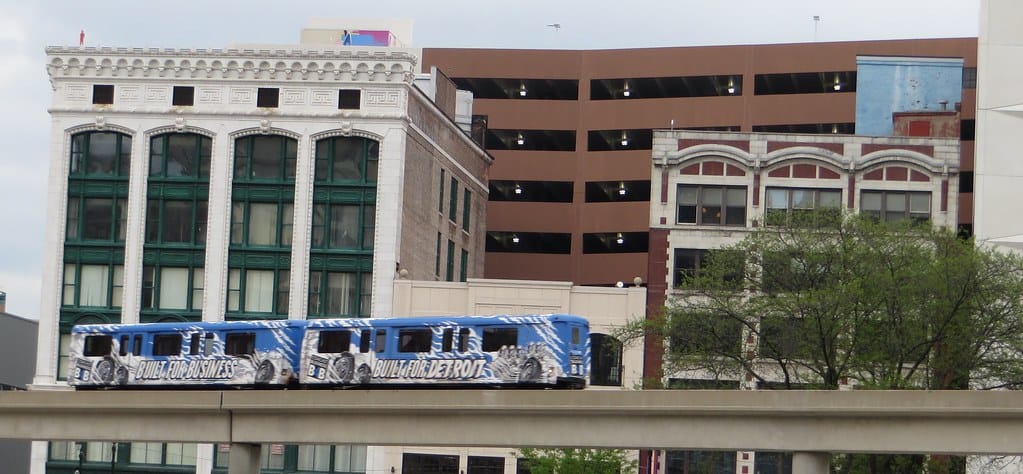Eastern Market already occupies near-mythic status in the fabric of Detroit’s civic life. But if you want to ponder some fascinating ideas about the future vision for the district (or you’re a wonk who loves urban planning studies, like me), then you’re in for a treat reading “Eastern Market 2025 Strategy.”
I went through the whole 114-page report, which was done by Philadelphia- and Los Angeles-based urban planners Olin, and compiled these takeaways.
1. Even as consumers embrace smaller-scale, locally grown and produced food, Eastern Market sees its future vitality threatened by Detroit’s broader gentrification.
That’s partly due to a stringent new federal law (the Food Safety Modernization Act), “which will render many old buildings unsuitable for future use for most food processing or distribution uses.”
“Eastern Market survived in part because Detroit’s weak real estate market over the past fifty years spared it the fate of fellow markets / market districts in other cities which became hip districts filled with bars, boutiques, and lofts. As the planning team and District stakeholders looked at these trends, the central question of our 2025 strategic planning process became clear: How can Eastern Market keep its working food district authenticity in the face of market trends and buildings that are ripe for conversion to other uses?”

2. At the same time, it also embraces these forces.
“With new retail and residential space, Eastern Market can become a more compelling destination on days other than Saturday. Expanding the District also accelerates the transformation of the current market district into a more robust mixed-use district with more retail, housing, and people.”
“The food industry is changing. These changes include new federal food safety regulations, consolidation, and a burgeoning local food movement. In order to keep pace with these changes, the traditional building fabric of the warehouses no longer fits with the scale of trucking, shipping, and processing called for in mid-scale food manufacturing. Increased demand for food industry use requires a new vision for integrating infrastructure, modern facilities and re-purposing the traditional building stock of an expanded District”
3. Eastern Market wants to remain a working food district — not a museum.
It clings hard to its 125-year tradition of authenticity; one of its primary goals is to “Keep the District a place of jobs, food innovation and entrepreneurship.” It also values what it calls “economic democracy,” noting that “Beyond welcoming a wide variety of customers, Eastern Market has been the place where new immigrants and struggling households have turned to pursue their dreams that have propelled them to launch new businesses and achieve economic success. Most importantly, the opportunity to make a living in the District, for all Detroiters, must endure.”

4. It sees potential for expansion in the largely vacant and blighted residential neighborhoods just east and northeast of the market.
“Owing to decades of flight and disinvestment in the former residential neighborhoods to the east and northeast of the current District, there is an ample supply of under-utilized land. A focused strategy for assembling parcels and aligning infrastructure could enable the redevelpment of hundreds of acres.”
5. It’s concerned about larger economic trends
“Over recent decades, shifts in the global economy and a decline in US based manufacturing have left large vacancies in Detroit, including Eastern Market.” The report also notes that the lack of suitable modern facilities have led to longtime tenants like the Butcher and Packer Co. and Maceri Produce to flee the market.

6. Its view of its place in the city is right out of the Jane Jacobs school of thought:
“The District supplies food across the entirety of the Midwest and into Canada, yet the District itself is an island, cut off by freeways and blight, despite being a 10 minute walk from Midtown or 15 from Downtown.” It advocates for improved connections to the surrounding neighborhoods, more density and improved pedestrian amenities along retail-focused streets, among other things. And it proposes a number of ideas — including building a cap over the Fisher Freeway with development on top — to better connect Gratiot Central Market and Eastern Market District for pedestrians.
7. It wants to eventually separate the retail and public market spaces from wholesale.
“Once the wholesale functions of the Market are relocated, the Market Campus can focus more on retail and public events markets. The Market Core can become denser with less need for truck marshalling space.”

8. It wants to re-engineer traffic flow to reduce competing interests.
The District’s pedestrian experience will be augmented by developing a logical parking circulation system and encouraging the growth of storefront retail along Russell, Riopelle, Wilkins, and Adelaide Streets. Both the traffic flow in and out of the District and the types of traffic are fundamental concerns of District businesses and customers.
9. It wants to make the market livelier on non-market weekdays.
“Examples proposed include using the parking garage for a drive-in theater, or a daily fitness program under Shed 2, or the already very successful tailgate events hosted by the Market.”
The report is beautifully done and fun to read, and it envisions an exciting, even more vibrant Eastern Market for the city.
What would you like to see done to improve Eastern Market?













